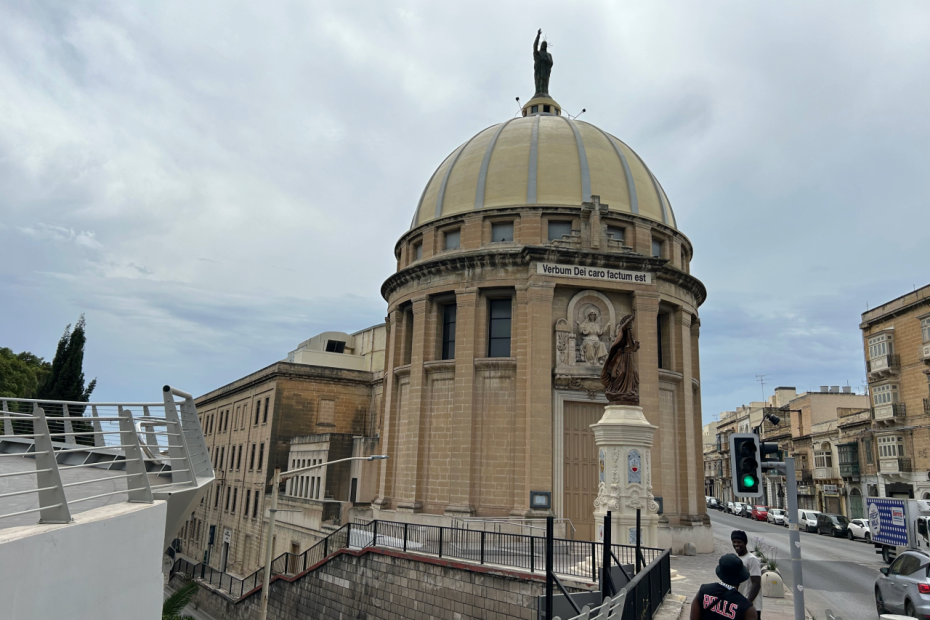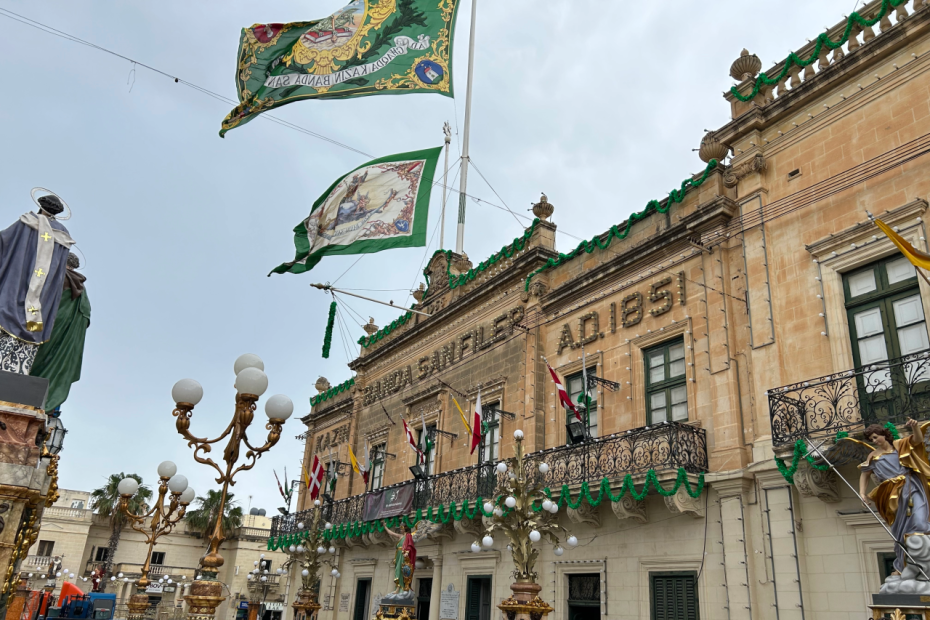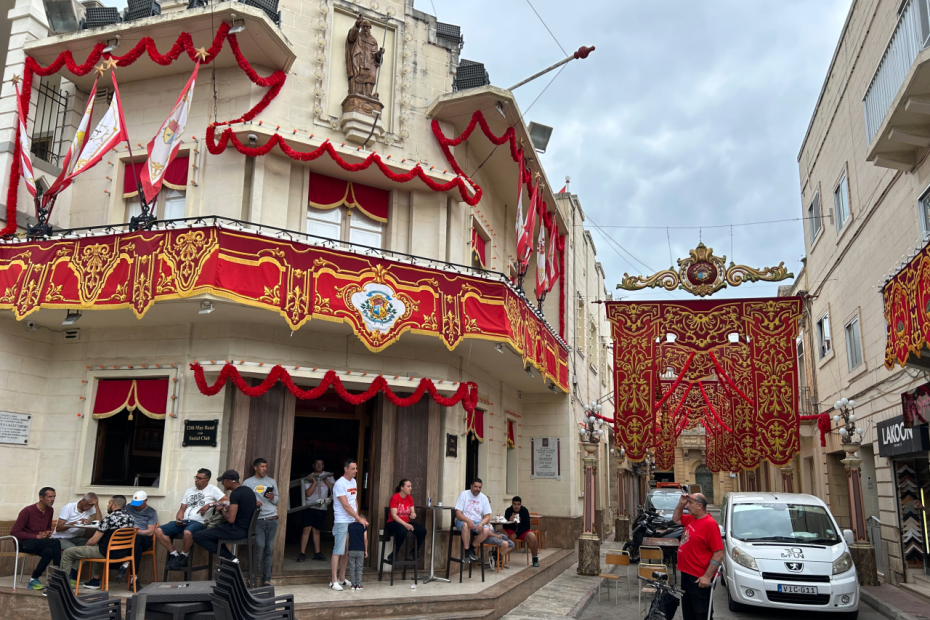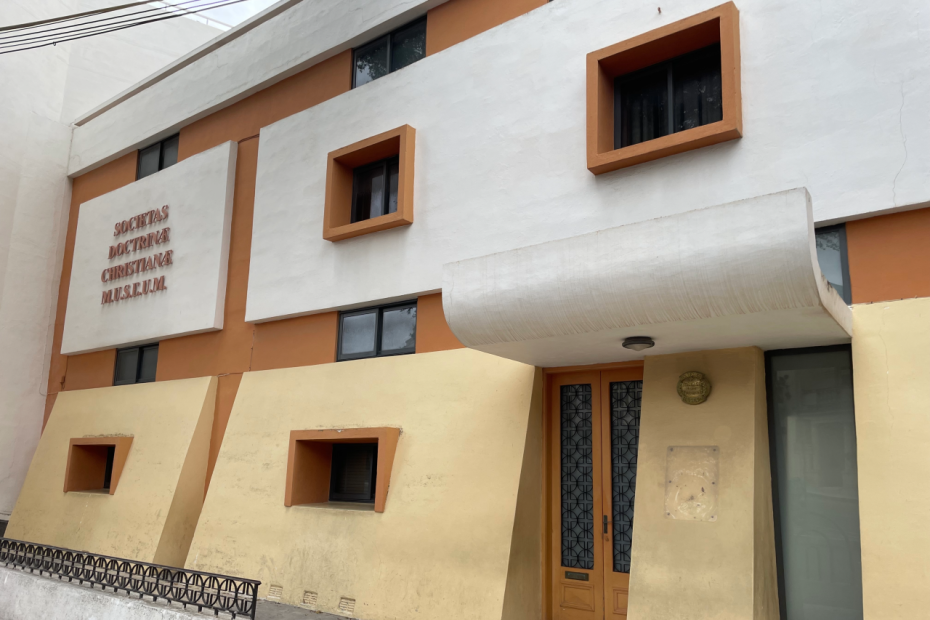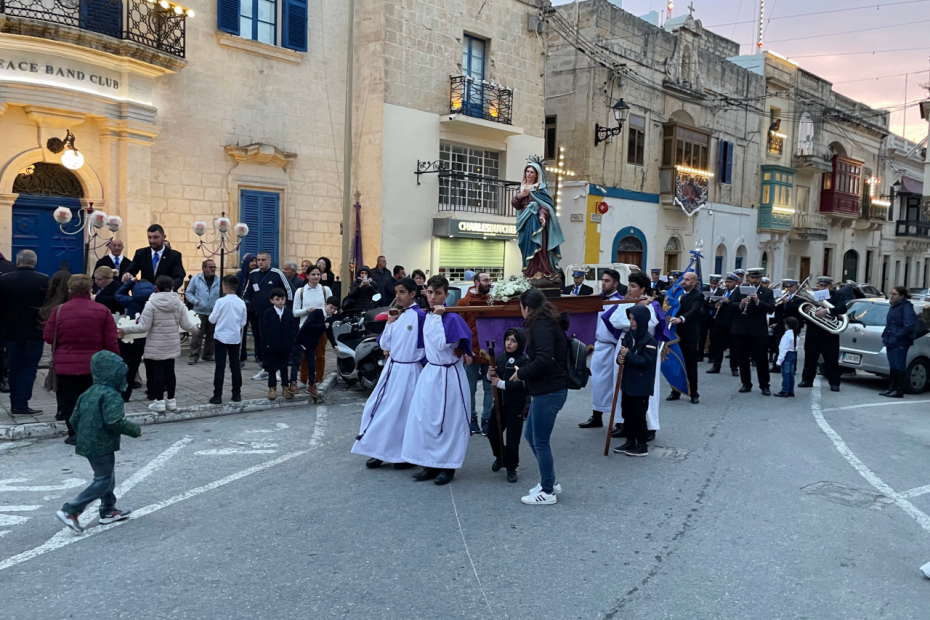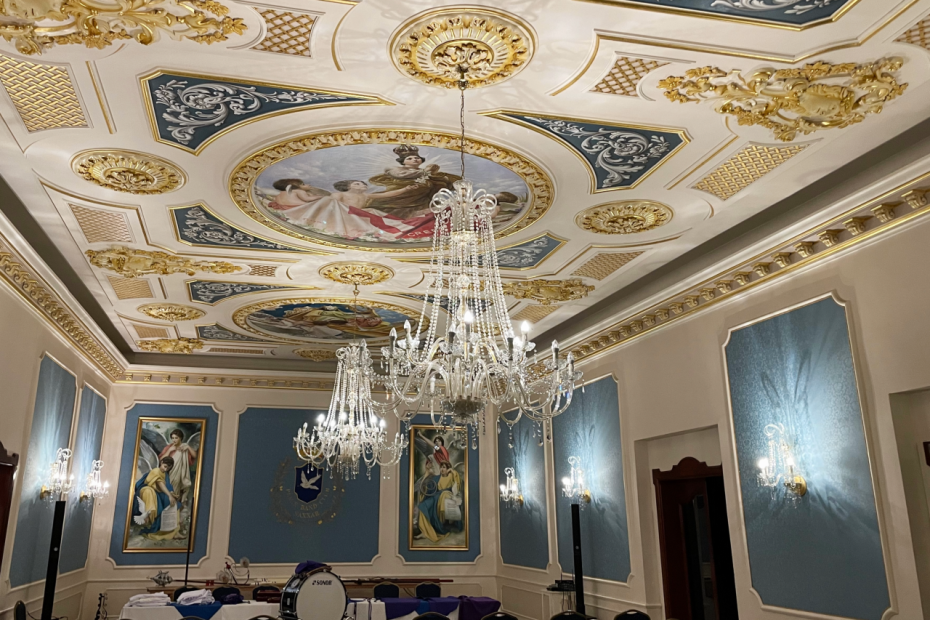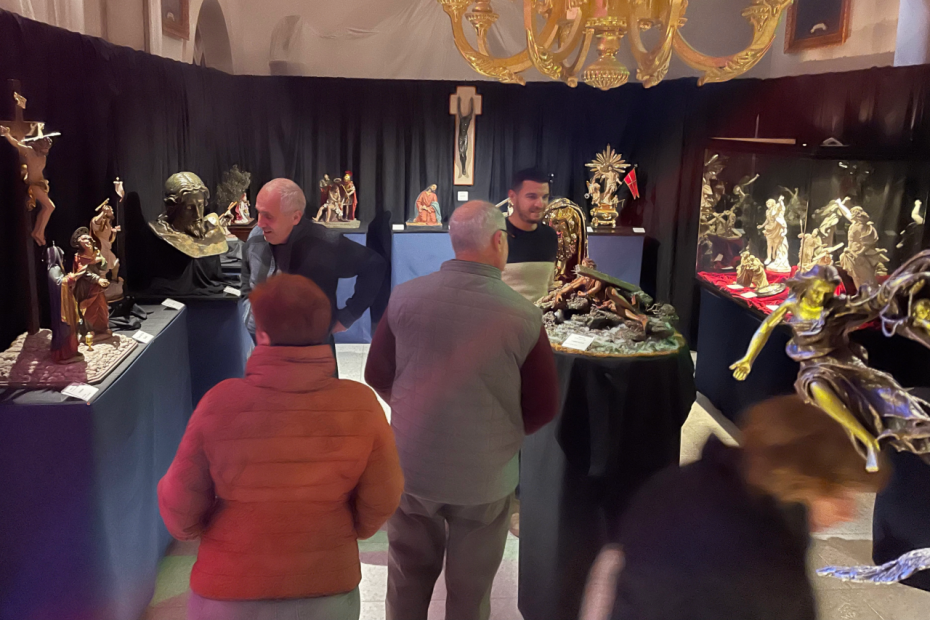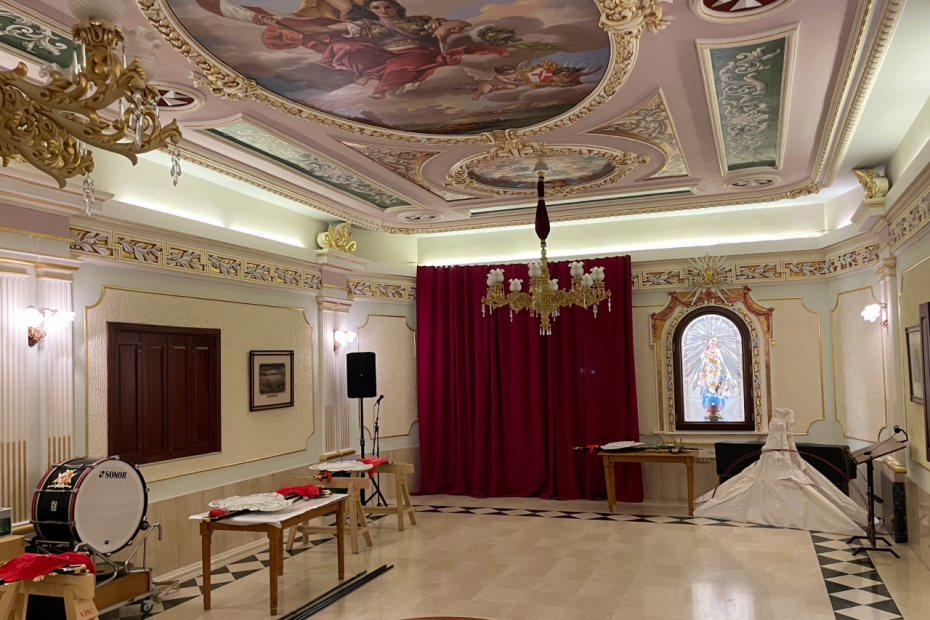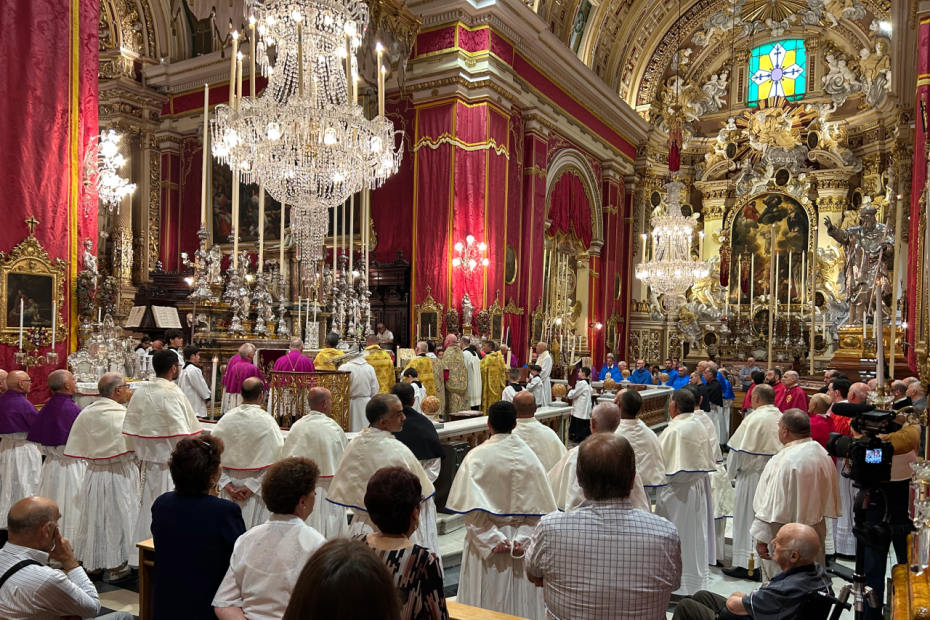Malta stands out among countries in the last century for the disproportionate role that priests and vowed religious have played in political, social, and cultural life on the islands. For most of Malta’s history, bishops, clergy, and religious congregations organized most of Malta and Gozo’s educational and social services.1 The unusually high number of priests per lay Catholic still ensures a significant, if declining, public role for clergy. To outsiders, the degree of clerical involvement in Malta’s social and political life may seem like the most significant story, but one should also remember that in an overwhelmingly Catholic country, lay Catholics have also been at the fore, especially in the post-colonial era. Lay organizing has not simply been crowded out or subsumed by the number of clergy in Malta. Rather, it has proven to be wide-ranging and interesting. Today, sectors like Catholic education, still robust, depend on large numbers of committed lay people.
Lay organizing has a long history on the islands. Parish confraternities–local societies of men and women whose collective purpose includes praying for deceased members, charitable work, and (for male members) accompanying the priest in their colorful silken robes at certain feasts and liturgies–are the oldest extant Catholic lay organizations in Malta. They endure in visible ways but are usually described as far from the most significant organizations in a parish.2 The Legion of Mary and Catholic Action, two other once-large organizations, are “quite active but small,” one leader said.
Worries about secularization in Malta notwithstanding, a variety of lay associations flourish here, from youth fellowships to small faith groups like the Confraternity of Christian Doctrine, a group of mostly retired intellectuals who gather at the university to discuss theology, charismatic groups like El Shaddai, “new communities” like the Neo-Catechumenate, a group known and Drachma for LGBTI Catholics and their parents, and charity groups like the Franciscan Welfare Association that distributes more than 1000 meals a week to refugees and teaches them English.
Interviewees said that there were hundreds of Catholic lay groups in Malta and Gozo, too many to document. Given that, two distinctively Maltese–and particularly influential–groups seem especially worth highlighting.
Society of Christian Doctrine (M.U.S.E.U.M.)
Founded by a Maltese priest, St. George Preca (1880-1962, canonized 2007), this lay organization runs catechetical centers in 39 parishes and is well-known throughout the islands. Preca started ministering to dockyard workers in 1907. Though Catholicism pervaded Maltese life at the time, Preca was convinced that working people deserved much better religious education than the Church, which communicated the faith through practice and public devotions, offered. “There was a lot of piety and a lot of tradition, and a lot of religious ignorance,” one of the organization’s current leaders recounted in an interview. Preca’s goal was not simply catechetical/informational, but “that Jesus be known and loved.” He started teaching working-class lay people scripture and theology with the aim that they could become “apostles” in their communities. The members chose the name “Museum” because that is a place where the greatest treasures of society are stored. Preca subsequently turned the name into an acronym, M.U.S.E.U.M., translated in English as “Master, may the whole world follow your Gospel.”3
M.U.S.E.U.M. members are all lay and celibate, belonging to distinct men’s and women’s societies. They don’t take vows, though at a ceremony of incorporation, they commit that while they are members they will follow the rule of life. They live with their families of origin or on their own and can leave the Society for marriage or religious life. Most join in their early 20s, and all work in full-time secular occupations. They are identifiable by a small blue pin they wear, reading Verbum Dei caro factum est, or “The Word of God became flesh.”
Their primary work involves the religious education of young people, for which they try to develop pedagogies that are accessible and attractive to people of different abilities. “Good instruction is the source of all wellbeing,” one said, citing the founder, so teaching and explaining things in a comprehensible way is the core of their work. From 5:30 p.m. to 8:00 p.m. several nights a week, they host children, and sometimes parents, for a variety of catechetical courses and sacramental preparation integrated with play, prayer, and ongoing education. After that, the members meet for an hour for their own spiritual renewal.
The Society’s charism is incarnational in focus, seeing God in all people, and their way of life is supposed to be prophetic, which they interpret to mean making humility and meekness incarnate in a violent world. Poverty, simplicity, willingness to be despised, and loving one another with great charity are the other virtues to which they aspire. A daily prayerbook for members called The Watch provides their spiritual framework and contains a prayer for every 15 minutes of the day.4 One admitted that in his work, it is hard to pray that frequently, but it is a reminder that “we are always in the presence of God.”
The Society also runs centers in Albania, Australia, Cuba, Kenya, Peru, Poland, and the United Kingdom. Their membership and the number of centers has shrunk, as is true of many religious organizations, but they remain a force. Its leader reported, “If you tell people here, ‘I am of the M.U.S.E.U.M, they know [what you mean]. It’s part of the culture.” Lay Catholics who are not part of the movement indicated that Society members are respected for their authenticity of witness and for being true to Catholic tradition and teaching from a positive perspective. Another noted that in a country whose Catholic culture was too “seasonal,” waxing and waning around feasts or Holy Week, they offer a consistent Christian witness.
Band Clubs
To outsiders, band clubs could well be the most puzzling religious organizations in Malta, but they are arguably the most particularly Maltese of all religious associations.
Every village in Malta has at least one band club, chartered by the Church and usually named for the saint whose feast they help celebrate. They play an integral role in organizing the spectacular parish/village feasts that define Maltese Catholic culture and provide music for Holy Week processions and some other religious occasions.5 In many villages, the clubs maintain a fireworks factory that provides another form of excitement for the feasts. During Holy Week, some sponsor religious exhibits as well. In Birgu (aka Vittoriosa), at the celebrated running of the statue of the risen Christ on Easter, their status and leadership is evident: the first place they run Jesus to is the front of the grand headquarters of the St. Lawrence Band Club at the peak of the plaza, where the arrival brings loud celebration.
Jeremy Boissevain, a prominent scholar of Maltese Catholic life, ascribed the origin of band clubs to Sicilian influences in the mid-19th century.6 Village feasts long predate the founding of the clubs, but the band clubs were founded to enhance and organize them. The clubs not only took on responsibility for the feasts by providing musical accompaniment and fireworks, transforming the celebration into the form we know today, but also reorganized the social life of the villages. The first clubs in any village were normally dedicated to the parish’s patron saint. New clubs were added when pastors and others wished to also celebrate a saint to whom they had particular devotion.7 The older clubs were originally all male, but in recent decades, membership and leadership have been open to women.
Though linked to the parishes, band clubs are as secular as religious in orientation, which is one reason why they might seem puzzling. Typically located in the most notable building other than the parish church, the band clubs would be at or near the top of any list of the most important cultural and social organizations in any particular village. In Naxxar and Żebbuġ, for example, each club fits that description and has its own public bar to help facilitate that role.8 Some have tables to play snooker, and all have elegant rooms for band classes, performances, and officers’ meetings. At the feasts, one way to frame it is to say that the Church handles the liturgical and processional, “religious” aspects of the feast, while the band clubs handle the street band, fireworks, and food, “secular” aspects. That sort of interpretive division misses the point of a feast is to intermingle these realms, putting the religious and secular in service of and contact with the other, undoing separate realms, by bringing the sacred into the streets.
The clubs and villagers are used to thinking of themselves as hybrid social/cultural/religious organizations. One leader in an interview expressed pride that his club could “hold together both the religious aspect and the traditional [cultural] aspect so well.”
That leader’s pride notwithstanding, many people, including him, alluded to challenges that undermine the band clubs' status as religious entities (the worst examples were always described as the problems of “a few clubs” or as problems of the past). One of the most puzzling and characteristically Maltese traits of the band clubs, particularly surprising in organizations with a religious mandate, is the intense spirit of competition between clubs. For generations, band clubs have garnered intense loyalty that can lead to conflict (some merely friendly but genuine competition, others occasionally insulting or even physical) in villages with more than one club.9 Sometimes the competition is humorous: In Naxxar, the older band is called the Peace Band, but the newer one, formed out of a split, is called “Victory.” (The first formally in honor of Our Lady of Peace, the second after Our Lady of Victory.) “They sing songs against one another,” one band club president reported about his village, but he also added, “I’m not proud to say this, but sometimes even families don’t speak to each other during the feast time because part of the family, they support us, and the rest of the family supports the other club.” A number of other competitive examples can in this site’s article on the summer feasts.
Even in a secularizing culture, band clubs are thriving, not least because the feasts[link] that they organize are as popular as ever. It would be a mistake to imagine the clubs today as basically secular institutions that occasionally still have to fulfill a religious purpose. The clubs’ religious duties are not mere obligations. Playing at feasts or Holy Week is a jealously guarded prerogative. A pastor ignores or offends the clubs at his own peril. While the band clubs are chartered by the Church, a number of people described the relationship between the pastor and the clubs as a delicate dance. “It’s negotiated… If during the feast [the pastor] takes a certain position, people will say, ‘Oh, you’re supporting the other club.’...There is literally a contract between us so that we have our own activities, our own marches… a role in the processions that belongs to us.”
A number of older Maltese interviewed for this research reported that they thought Maltese were becoming too individualistic. The band clubs suggest that in a number of ways, loyalty remains important, even intense social value in Malta, even as ties to the church are weakening.
- 1The ratio of priests to lay Catholics in Malta is still among the highest in the world, and Maltese parishes still have a number of priests each, many of whom live with their birth families rather than in rectories — a local custom that differs from most countries. If one excludes missionary countries that have tiny Catholic populations but many missionaries, the ratio of clergy to lay people in Malta is among the highest in the world. Yet today, seminaries are struggling for vocations. The number of religious women has declined precipitously in recent decades and, like in many parts of Europe, the median age of members of women’s orders skews very high.
- 2Jeremy Boissevain, Saints and Fireworks: Religion and Politics in Rural Malta (London, Athlone, and New York: Humanities Press, 1965), 21-22. Even in the 1960s, Boissevain points out that the confraternities had relatively little impact in villages, certainly compared to band clubs.
- 3The Society for Christian Doctrine published its own short history of the founder and his impact, Venerable George Preca: His Life and Vision for the Laity (Malta: Preca Library, 1999). Special thanks to Roberto Zammit, the Superior General of the men’s branch of the Society, for speaking about its work.
- 4The formation and the various dimensions of their work are drawn from a booklet titled "The SDC Vocation: Identity and Formation" (Malta: Society of Christian Doctrine (SDC), n.d.), and from interviews with members. Their website shares more details and news.
- 5Churches generally also have separate choirs and musicians for liturgies. Those I heard, on special occasions, were of very high quality.
- 6On the founding of band clubs and how they transformed the celebration of the parish feast, see Jeremy Boissevain, “Festa Partiti and the British: Exploding a Myth,” in The British Colonial Experience 1800-1964: the Impact on Maltese Society, ed. Victor Mallia-Milanes (Malta: Mireva, 1988), 214-29.
- 7Boissevain, Saints and Fireworks, 91-92.
- 8On-the-ground research for this article was conducted in Naxxar in March/April 2023 and in Żebbuġ in June 2023.
- 9Boissevain, Saints and Fireworks, 74-96, devotes a whole chapter and more to the rivalries, with many other mentions of the phenomenon throughout the book. The factionalism takes place in villages that, compared to most of the world, are otherwise very safe from violent crime.
